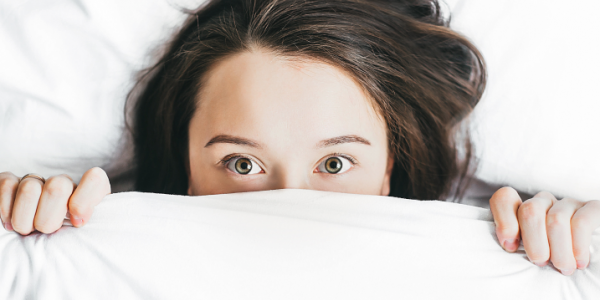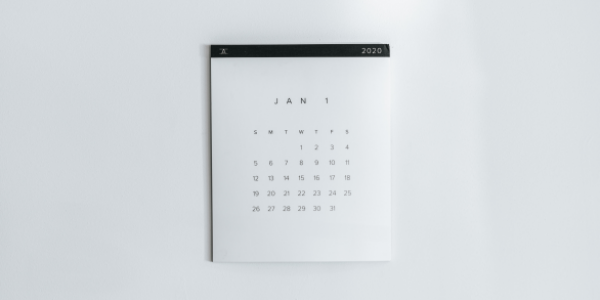Avoid the Avoidance Cycle

How to recognize the powerful pull of avoidance so that you can find ways around it.
Nick lives about a block and a half from his school. In fact, he can see the school’s flagpole from his front porch if he stands on its far edge and leans over the rail, looking up the street. Every day, he wakes up at 7 or so, has a little breakfast with his parents, and is out the front door by 7:45 so he can be in his classroom by 8. It only takes him 10 minutes to walk to school, but he likes to be there a little early so he has a few minutes on the soccer field with his buddies.
One day a few weeks ago, as Nick was walking his usual route to school and was passing his neighbor’s house, a small dog rushed the short fence, barking furiously in that high pitched way that little dogs do. The dog stopped at the edge of the fence, but then followed Nick the entire length of the fence on it’s opposite side, yipping at him the whole way. Nick was startled, his heart suddenly pounding, his mind suddenly blank in his panic as he quickly hustled as fast as he could away from the house and this dog.
Nick doesn’t like dogs.
He’d never seen this dog before, and he didn’t know where it came from. Maybe his neighbors were watching a family member’s dog for the week. Or, even worse, maybe they got a new dog this weekend. That would mean that every single day that Nick walked past this house he’d have to see this dog. Or, at the very least, he’d have to watch out to see if the dog was going to rush him and bark at him.
At school, Nick sat down and started to worry. He didn’t want to have to see that dog, and he didn’t want to have to feel that way again. He hated the feeling of being scared, and so he decided that he needed to walk home from school a new way. At 10 years old, he knew his neighborhood pretty well, so he made a plan to walk home around the block so as to avoid the dog altogether. As soon as he decided this, he immediately felt better, and went on with the rest of his day. After school, he walked home the new way, and didn’t feel anxious the whole time. Problem solved!
Or, is it?
Avoidance
Avoidance is our tendency to move away from something that makes us feel uncomfortable, or that we have some sort of aversion to. Our friend Nick is avoiding feeling scared around dogs, but we avoid uncomfortable stuff all of the time. Sometimes, the things we avoid are obvious, like not getting started on a project that feels overwhelming, or refusing to look out of that big window on the 15th floor of a hotel. Sometimes, we avoid in more subtle ways, like avoiding eye contact or politely declining an invitation to a gathering where we might not know anyone.
Why not avoid that stuff that feels bad, right? And, holy smokes, human beings are great at finding creative ways to avoid doing what we don’t want to do. Because here’s the thing that we know about avoidance: avoiding something that makes us uncomfortable feels infinitely better almost immediately than feeling that uncomfortable feeling. Playing Wordscapes on my phone feels so much better than getting around to the task of writing all of those casenotes after a day of meeting with EAP clients.
That was certainly Nick’s idea. By walking a new way home from school, he’d come up with a very practical solution to his problem: I don’t want to feel scared by the dog, so I’ll walk a new way home!
The Problem with Avoidance
Ah, but there’s a catch (because there’s always a catch when it comes to simple solutions to complex emotional problems): the more we avoid something, we tend to become increasingly anxious or fearful of that thing that we’re avoiding. The simple act of avoiding something actually begins to teach our brain that we can only cope with the problem by using the avoidance technique. The more that we avoid, the more we believe we can’t handle our problem without avoiding, which leads to more avoiding, and to more anxiety.
When we last saw Nick, he had walked home from school a brand new way to avoid seeing that freaky dog. He was feeling pretty good about himself, too. Well, a few days later Nick was walking his new route and looked up and saw another neighbor walking his dog toward him! Nick had never seen this dude walking his dog before, because he’d never walked this way to school before. He thought to himself, “Does this guy walk his dog this way every day? I didn’t see him yesterday, but he might have been out of town!” His heart was racing, feeling increasingly anxious as he approached the man and his dog. Crossing the street to avoid getting too close to the dog, Nick decided to find a new way home after school today.
That night Nick tried a new route, and on these unfamiliar streets he found a few more fences with dogs lurking inside. For the next few weeks, Nick kept trying new routes to school, mentally cataloging houses that had dogs outside in fences, streets where people were walking their dogs at certain times, and even paying attention to those living room windows where dogs barked at him from behind the glass. Eventually, Nick found a path to school that was dog free.
That path took him 45 minutes to walk to school.
He started waking up at 6 in the morning, rushing around the house getting himself ready. He would get upset with his dad when breakfast wasn’t on the table early enough for him to leave the house by 7, so that he would have enough time to get to school on his new dog-free route. As he walked, he experienced a combination of relief that he didn’t have to experience the panicky feeling of seeing and hearing a dog; but he also remained in a state of constant vigilance, his eyes darting around to make sure that he his route was still safe for him.
Nick did what most of us do when we have to face some sort of difficult situation: we avoid the situation and feel immediate relief, which encourages us to keep avoiding. But, every time we avoid that difficult thing, we are contributing to the ever growing belief that we can’t handle the thing that we’re anxious about without the avoidance. And that makes us avoid again and again and again.
Think of it like a cycle that keeps reinforcing itself:
- You have a difficult situation to face.
- Instead of dealing with it, you avoid the situation
- You experience big relief! Yay!!
- Now, you believe that you couldn’t have handled the situation without the avoidance.
- Rinse and repeat, ad nauseum.
Right now, try to think of anything that you’ve been putting off for the past few hours. Or days. Or weeks or months or even years. Why haven’t you called that person back that you’ve been meaning to? Why didn’t you go to that party a few weeks ago? Why haven’t you made that appointment with the EAP to talk about your anxious feelings (insert shameless plug for the EAP here)? Chances are that you’ve found some clever way to avoid doing the thing that makes you feel uncomfortable, and you keep doing that clever thing because in the moment it feels better than walking head first into the problem you’ve been avoiding.
What now?
The most important thing that you can do to begin to avoid further avoidance is to begin to notice that you are avoiding something. Pay attention to your feelings, and if you notice that you are actively avoiding something, ask yourself these questions (not necessarily in this order):
- What feeling am I really avoiding? This is actually a trickier question to answer than it might seem. Often we have been avoiding something for so long that we might not know what it is that we’re avoiding any more. People who notice that they are avoiding looking out a window on the 10th floor may be avoiding feeling afraid of falling, or they might be avoiding feeling afraid of jumping. Someone avoiding getting started on a project may be avoiding the discomfort of having to do work that isn’t fun; or they may be very afraid of failure, and starting a project means that at some point someone will have to critically review your work.
- What am I doing instead? Try to identify what it is that you are doing to avoid that feeling. Are you playing on your phone? Are you distracting yourself with socializing? Are you numbing yourself with alcohol or other drugs? The thing you’re doing to avoid may, on the surface, appear to be something useful, such as cleaning the house when you need to call about that job application.
Nick didn’t really solve his problem. He thinks he did, because he thinks that his problem is the dogs themselves, and believes that as long as he avoids them, he doesn’t have to feel that yucky feeling any more. But, Nick’s real problem is actually that he has uncomfortable feelings when he is in the presence of dogs, rather than the dogs themselves. The more he avoids dogs, the more he feels anxious around dogs, and the more likely it will be that he will continue to avoid dogs.
Once you can see what it is that you are avoiding, and how you are avoiding it, you can begin to challenge avoidance. There are many techniques that can help with this. And, when I get around to it, I’ll write another article describing some of these techniques.
But first, I’m going to finish this Wordscapes puzzle on my phone.
Related Articles

Now is the Time for Increasing Our Psychological Flexibility
In a strange and confusing time, these strategies and resources can help you be in the present, open up, and do what matters.

Take Care of Yourself on National _________ Day!
National holidays give you a great excuse for some fun self care.


Parenting Self-Help Books That Might Actually Help!
With so many parenting self-help books to choose from, it's sometimes hard to know which ones will actually help! One of our Emotional Wellness consultants provides you with a list that he recommends to his clients to get you started.





